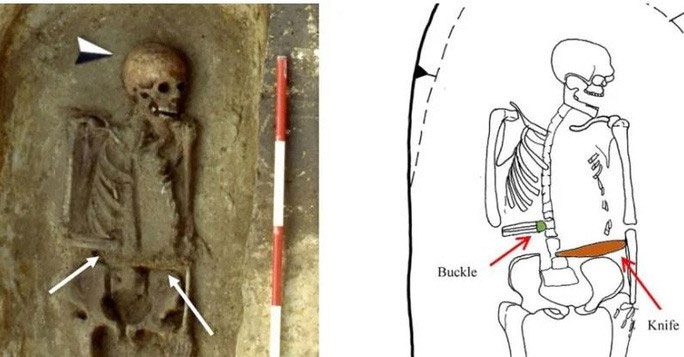Early Evidence of Prosthetic Use Found in Ancient Tomb in Northern Italy

Man with a knife for a left hand – (Photo: Sapienza University).
According to Science Alert, this is a Medieval cemetery dating from the 6th to the 8th century AD. Archaeologists have discovered hundreds of human skeletons, as well as a headless horse and several greyhound dogs. The skeleton of the aforementioned man has attracted particular attention.
Analysis by a research team led by Dr. Ileana Micarelli from Sapienza University in Rome (Italy) revealed that the man’s hand had been amputated due to an injury caused by a blunt object.
“It is possible that the limb was amputated for medical reasons or that the forearm was broken due to an accidental fall, leading to an unhealed fracture. However, given the warrior culture of the ancient Lombards, losses due to combat may also have occurred,” the article published in the Journal of Anthropological Sciences stated.
Further examination of the bone showed evidence of a form of biomechanical stress, contributing to the formation of characteristic scar tissue, similar to the stumps of modern prosthetic users.
Clear wear was also found on the man’s teeth, likely due to his frequent use of his teeth to tighten a strap on a device attached to his amputated hand.
In the ancient tomb, scientists discovered a peculiar object: a blade, a D-shaped buckle, and an organic material that had decomposed, located right at the man’s stub.
This suggests the presence of a knife attached to a small leather cap fitted onto the man’s amputated hand – a type of prosthetic designed for a warrior.
Further analysis of the remains indicated that the man lived a considerable time after losing his hand, a rarity in the Medieval period, as living healthily with a significant body part missing was quite challenging before the antibiotic era. It is clear that he was well cared for and supported by his family and community.





















































